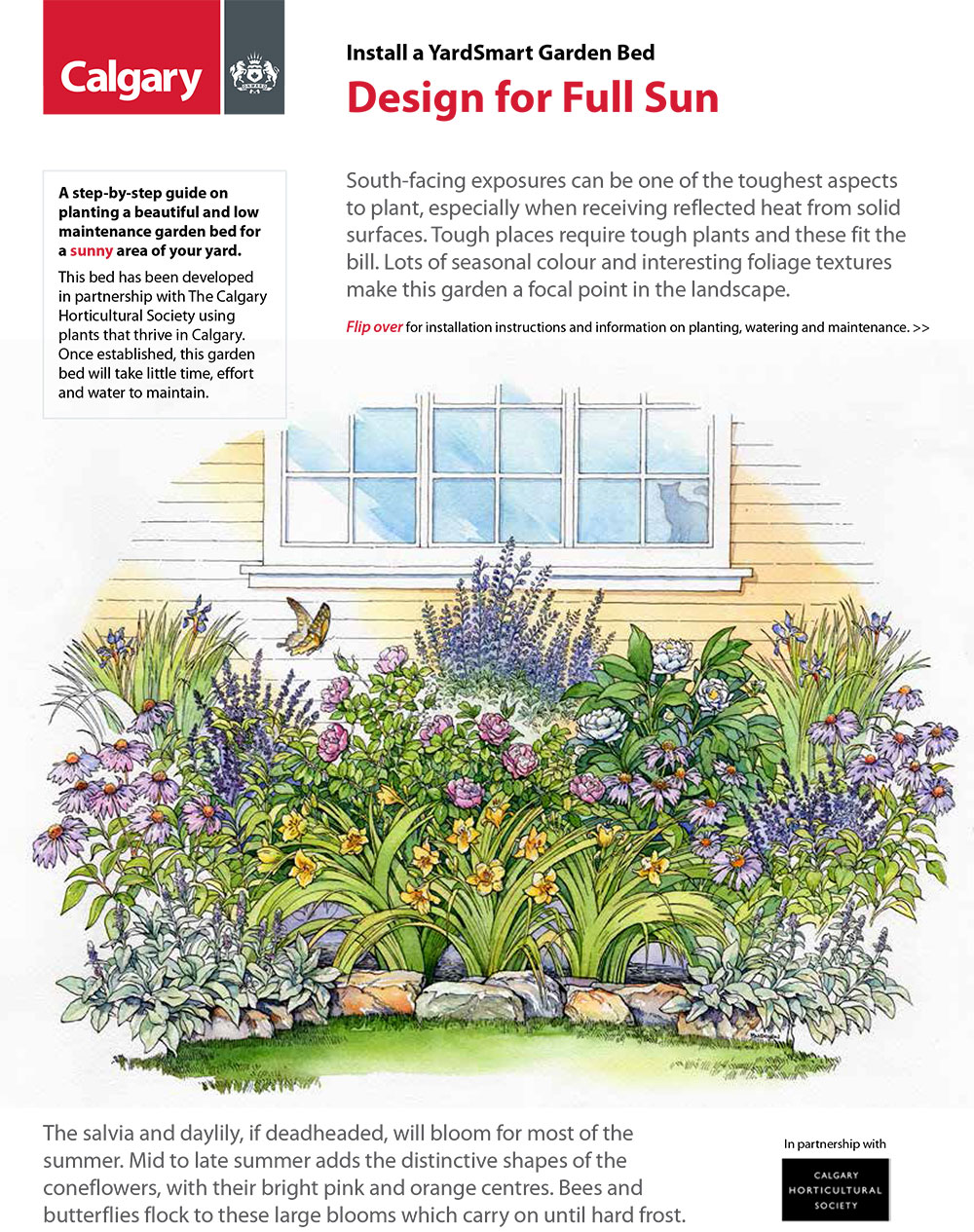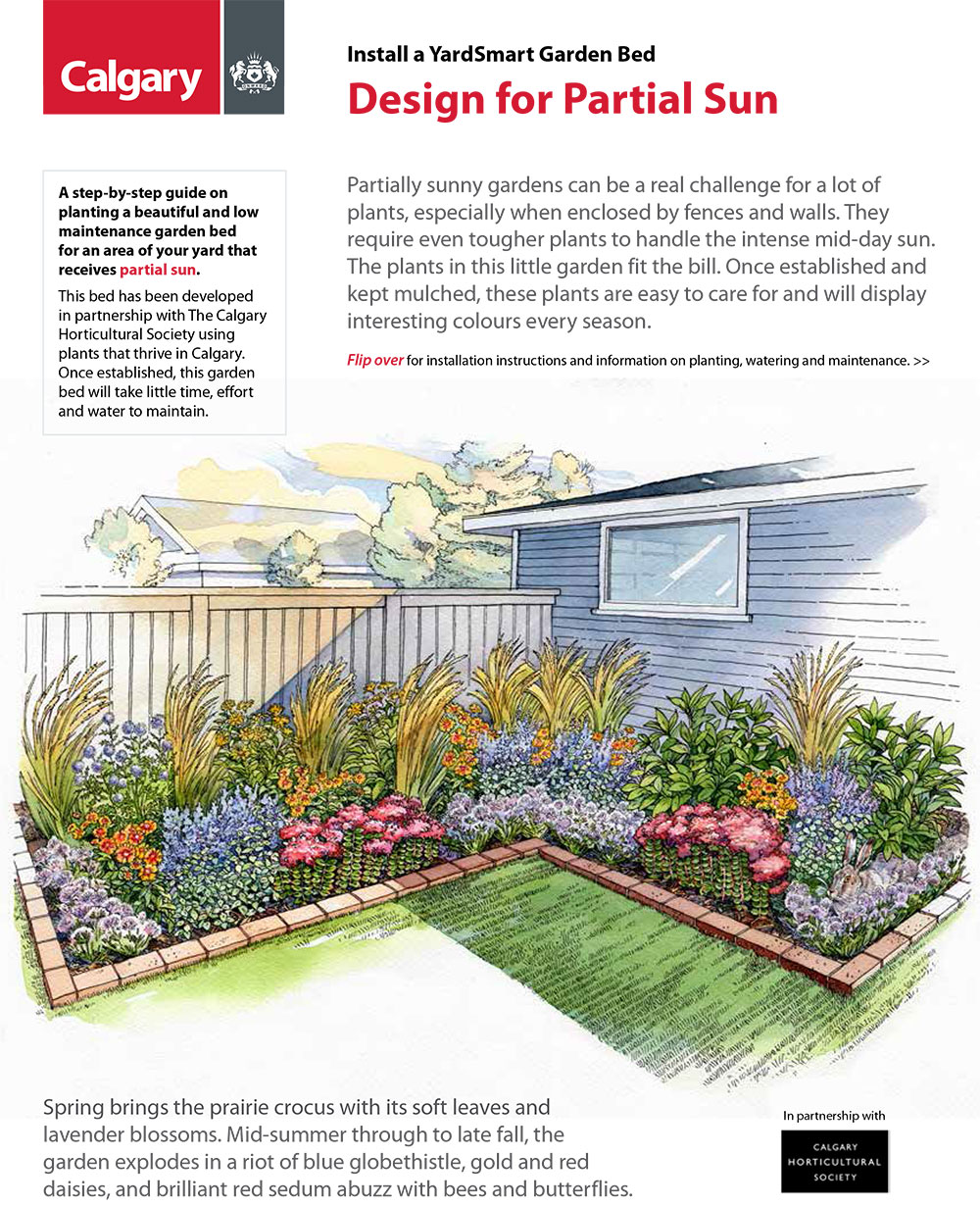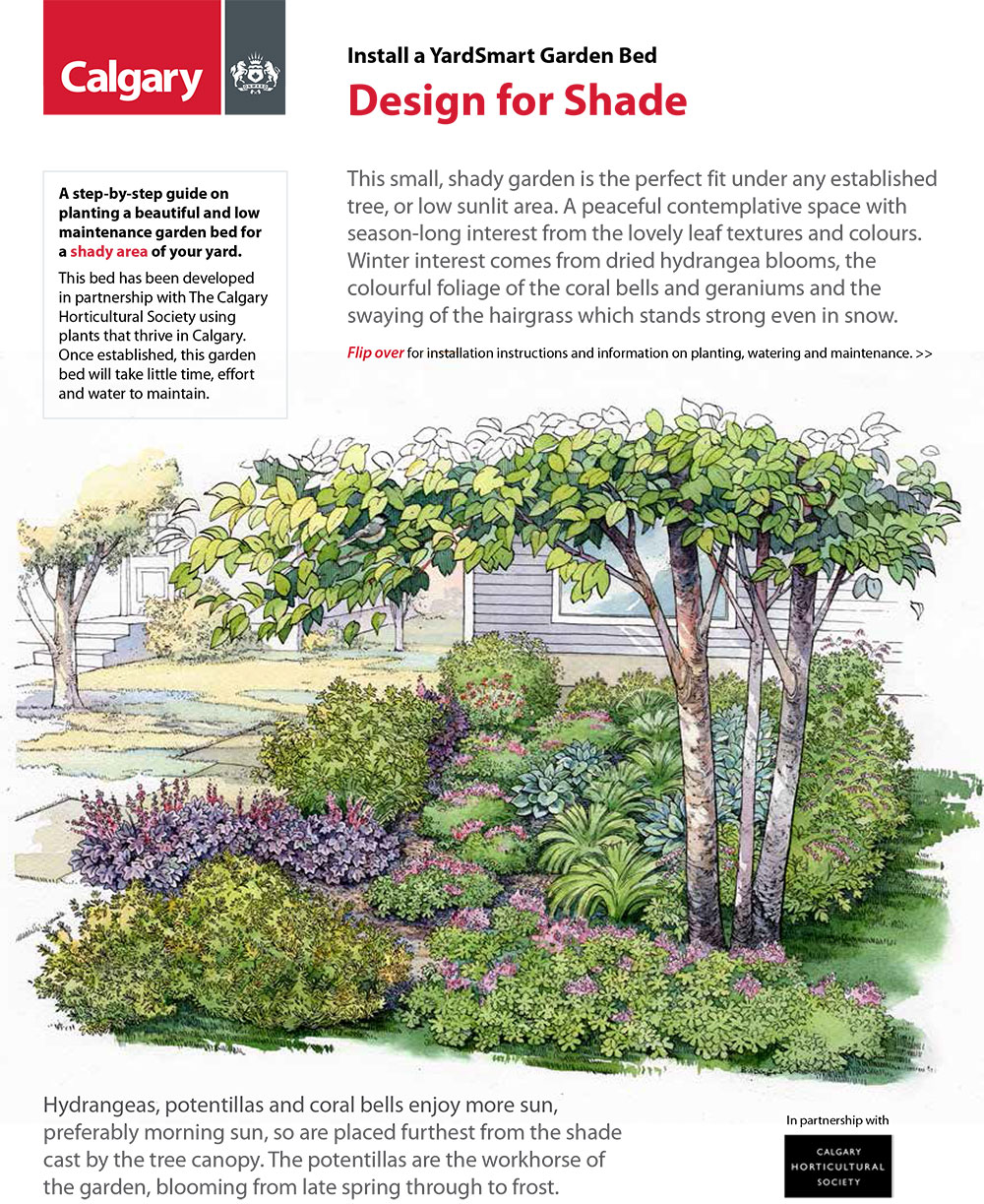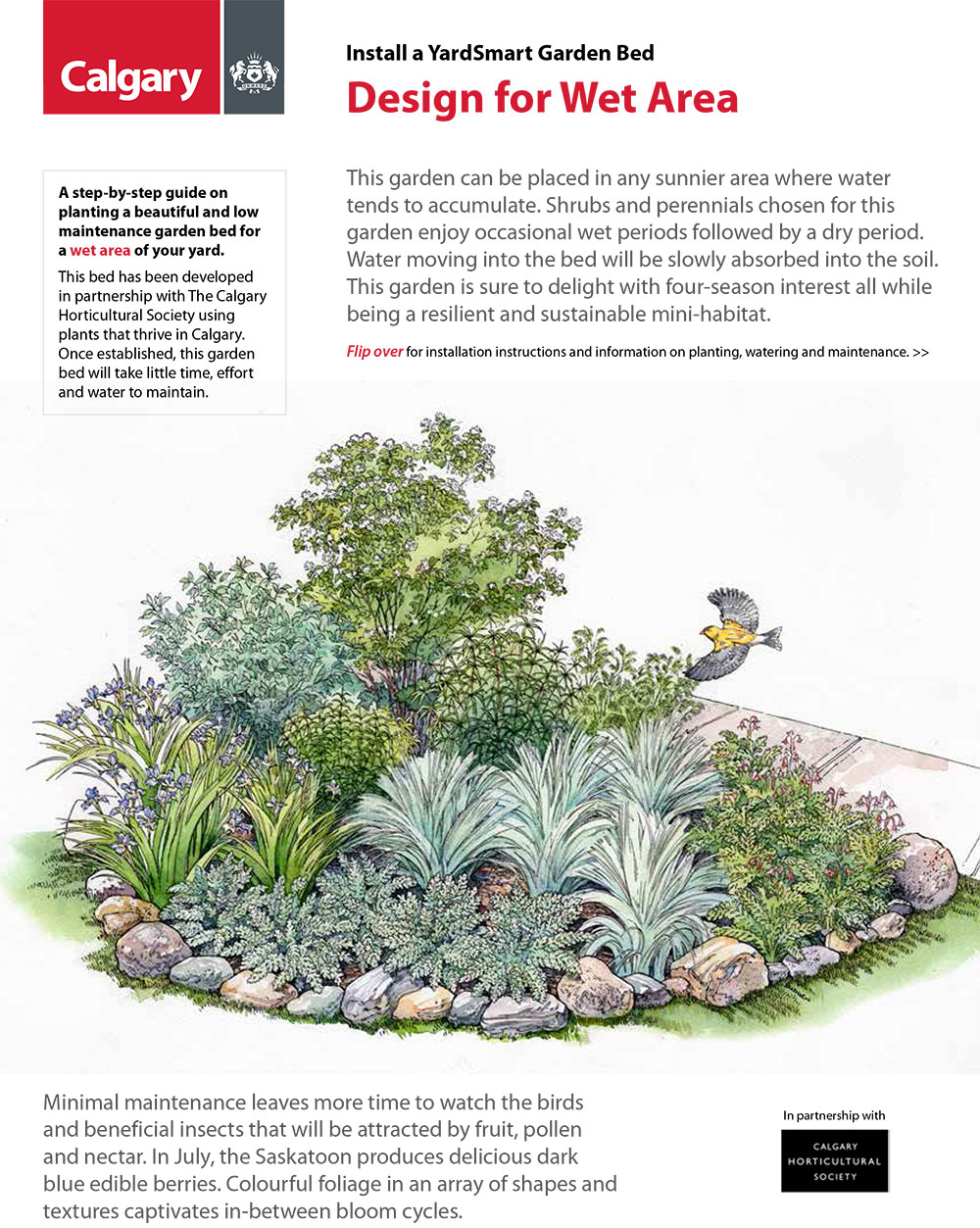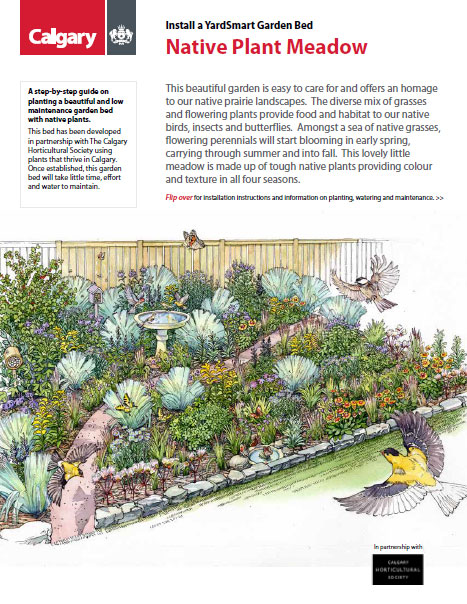YardSmart Planning and design
Taking the time to create a design of your yard before starting any projects will increase your chances of success.
Create a sketch of your yard
- Draw a diagram of your yard and map out areas of sun, shade, dry and wet.
- Plot specific places for things like play areas, dining and entertainment, composting, gardening and rain barrels.
- Make a note of where water runs or pools; additionally, group plants with similar water needs together.
- Slope your flowerbeds and place plants that need the most water at the lowest part.
- Shape your beds so sprinklers and soaker hoses can easily accommodate them.
Design for dry conditions and pollinators

Choose plants that thrive in Calgary’s climate and are tolerant to drought. Also consider flowering perennials and native wildflowers which support pollinators.
See our guides of recommended hardy, water wise plants for Calgary including perennials, native wildflowers, trees and shrubs, and lawn alternatives and groundcovers.
Reducing your lawn
Wherever possible, replace portions of your lawn with tiered gardens, rock gardens, low water-use shrubs or flowering trees and groundcover. These garden features use less water and act as wonderful filters and sponges to help absorb rainwater. Here are three ways to remove your lawn:
- In the fall, smother the lawn by covering with several layers of damp newspaper or cardboard. Top with compost.
- Dig up the sod, flip it over so the grass is facing downwards, and cover with soil so no grass shows. You can plant right away or wait a month. Top with compost or new soil before planting.
- Put a 10 cm layer of compost and new soil on top if the grass to smother it. Ideally, wait a few weeks for grass to die, or plant right away ensuring there is no grass exposed after planting.
If you still enjoy some function of a lawn, there are alternatives such as clover or creeping thyme. These lawn alternatives are sometimes better in the backyard because they can spread to your neighbour's lawn. You can also ask your local sod provider about drought tolerant turf varieties.
Calculating mulch
Bark, wood chips, or stones will reduce the evaporation from the soil, slow weed growth, and decrease soil erosion. To find out how much mulch you'll need:
- Determine the size of your flower bed.
- Decide the depth of mulch (ideally two to four inches).
- Multiply the size of your bed area by the depth of your mulch.
- Divide the result by 324.
- The result will give you the number of cubic yards you'll need.
Considering rain gardens
Rain gardens are a great landscaping feature that can be placed in a low-lying area of your garden. Rain gardens are shallow depressions filled with loose soil and planted with beautiful, hardly low-maintenance water-wise plants. The rain garden will naturally filter the runoff before it enters the stormwater system. To learn more, visit Rain Gardens in Calgary.
YardSmart how-to videos
Planning a Garden Bed
Creating a New Garden Bed
Pollinator Friendly Yards
Fertilizing Plants
Pest Free Gardens
Plants for Calgary's Climate
Effective Watering
How to Garden on a Budget
Need help designing your garden?
Not sure which plants to use or the right spot to plant them?
Download our step-by-step pdf guides or click on the image below to learn how to create beautiful and low maintenance garden beds which work in all areas of your yard:


